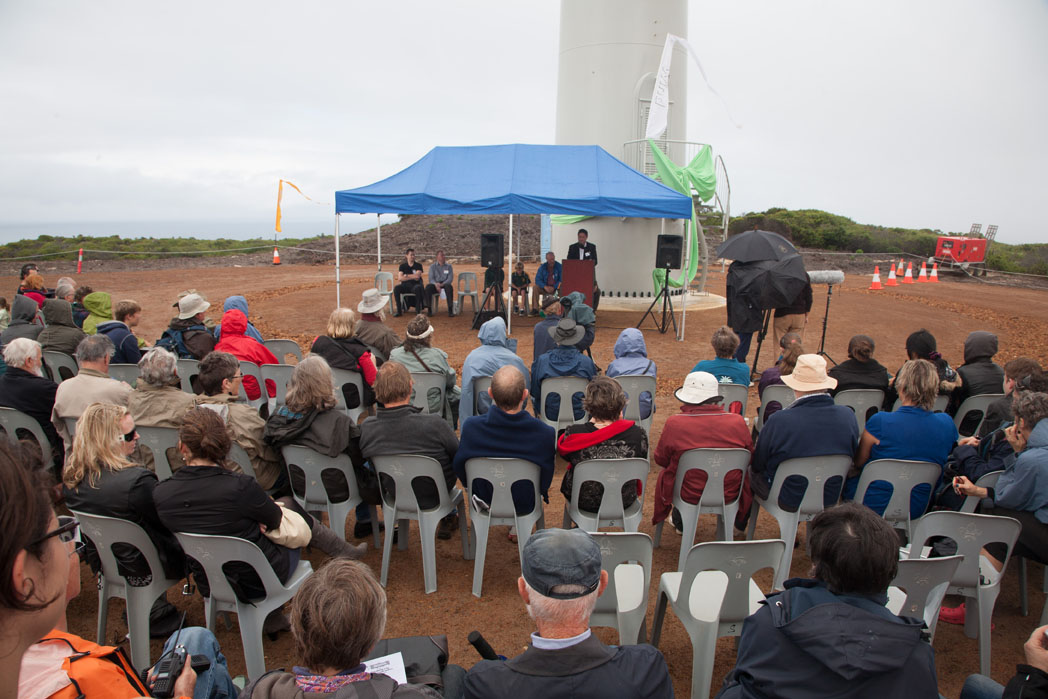

Community Energy
By its very nature centralised energy production is Big. It requires Big capital, which means that it can usually be developed only by Big public utilities or Big corporations.
It needs to make Big profits to help cover Big ongoing costs, which are paid by consumers — directly through tariffs, and indirectly through government subsidies such as tax concessions.
A community energy system (CES) on the other hand supplies local energy requirements from locally situated renewable energy (RE) or high-efficiency cogeneration, connected to consumers by infrastructure which replaces or enhances the traditional power grid.
It produces what’s required by local demand ('scaling'), thus minimising the need for built-in redundancy, and reducing transmission losses and their attendant costs.

The opening ceremony on 17 March 2013 gave most visitors their first chance to experience the 360-degree view from the site – one of only a few places in the district where such a view is possible.
A typical CES is characterised by
- reduced transmission losses and lower charges to users
- increased robustness and reliability of the central grid (if connected)
- local people having a financial stake (with or without a commercial goal)
- community participation in the development process
- delivering significant community benefits
- reducing carbon emissions
- financial benefits staying in the community
- appropriate scaling.
Small is beautiful
A CES gives people the chance to make a significant, collective contribution to creating their own energy future at a reasonable and achievable economy of scale — a single 1MW wind turbine, for example, is more cost-effective than hundreds of rooftop solar installations, appliance conversion, using public transport, improving home insulation and other domestic-level energy-saving measures put together.
A CES also provides an opportunity to do something that governments aren’t doing nearly enough of — creating real change at the community level and/or helping communities get off the fossil-fuel merry-go-round.
More info: Coalition for Community Energy

© 2020 Denmark Community Windfarm Ltd, Denmark, Western Australia. All rights reserved.
Website by jddesigns.com.au
